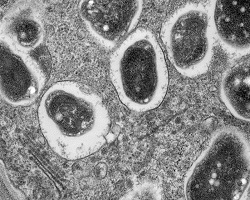show/hide words to know
Finding Answers and Making Discoveries
Most biologists don't just wake up one day and start making discoveries. They spend many months, even years, working on a particular research question.
Biologists often must work very hard on many small experiments. Each one is like a piece of a puzzle, providing more information about a larger question.
Each time a biologist performs an experiment, they come one step closer to finding the answer to their larger research question.
How Do Biologists Figure Out the Big Picture?
Let's look at an example. A biologist observes that a special beetle only eats certain plants and avoids others. To understand why this is happening, she or he may need to investigate the fungi that grow in the plants or the microbes in the soil.
All of the species in an area are affected by the other species they live near. All of these organisms can in turn be affected by non-living influences, like the amount of rain the soil gets. So, to see the big picture, a biologist may need to study multiple pieces of a single ecosystem.
Listen to more of the story behind one type of grass and its community:
or download the mp3 here.
With so many living things to study and places to study them, it is very difficult understand everything. This can make it difficult to answer research questions about a whole ecosystem. But rather than having one person try to tackle all these different angles, biologists will often work together to explore a big question. We call working together collaborating.
Biologists Share Information and Work Together

It's important to consider different perspectives to solve a problem. Looking at how baby birds use wings might help researchers understand the evolution of bird flight. Image by xlibber.
Sometimes in a collaboration, scientists rely on each other to bring in different parts of the puzzle. For example, researchers used to look at dinosaur bones and the physics of flight to try to figure out how bird flight evolved. However, when researcher Ken Dial added a new piece to the puzzle (looking at how baby birds use their wings), the overall picture of bird flight evolution became a bit clearer.
In this way, when different researchers each solve a part of the puzzle, everyone can get a better understanding of the bigger picture.
Check out our podcast that looks into research on the evolution of bird flight:
or download the mp3 here.
Additional images via Wikimedia Commons. Cryptic grasshopper by Marshal Hedin.
View Citation

Sometimes understanding what you're observing can be difficult. To see the big picture behind a question, you may need to look at it from new angles or work with other researchers.
Be Part of
Ask A Biologist
By volunteering, or simply sending us feedback on the site. Scientists, teachers, writers, illustrators, and translators are all important to the program. If you are interested in helping with the website we have a Volunteers page to get the process started.








